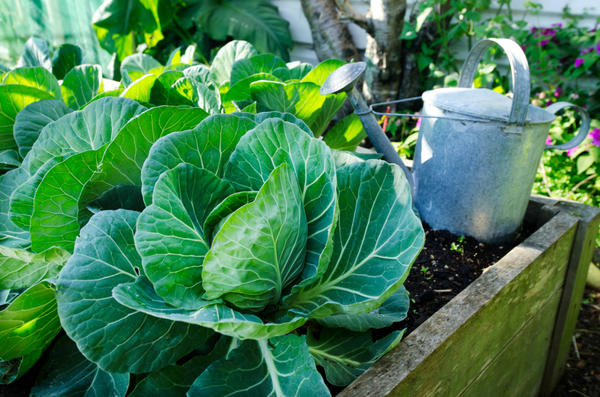
The result of growing any garden crop is a crop whose quality largely depends on leaving at different periods of development. Cabbage refers to plants that require special attention - without proper care, you can lose the crop, but the timely implementation of all measures guarantees its receipt in good quality.
Content
Outdoor Care Steps
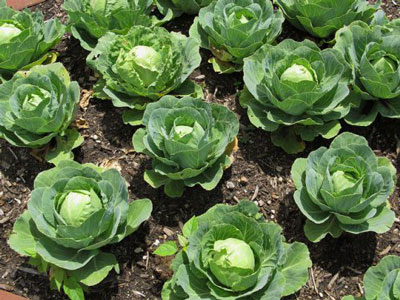
To get a firm, elastic and juicy head of cabbage without flaws, you need to properly water, loosen, feed, prevent diseases and pests, based on the characteristics of the plant: a small root system located superficially, a large volume of leaves that evaporate a lot of moisture.
Watering
Among a wide variety of vegetable crops, cabbage can be distinguished especially - she loves water. It should be watered taking into account the soil, variety, development period:
- Planted seedlings are watered every 3-4 days, using 8-10l per 1 m²;
- watering volume is increased as it grows - 10-12l per 1 m²;
- early ripening varieties in June are watered more often than later varieties every 8-10 days;
- watering standards of late varieties increase in August, when the formation of heads of cabbage;
- stop watering 3-4 weeks prior to harvest to prevent moisture glut and cracking heads;
- on heavy soils, water evaporates more slowly than on loose soils - this should be taken into account when regulating the frequency and volume of irrigation.
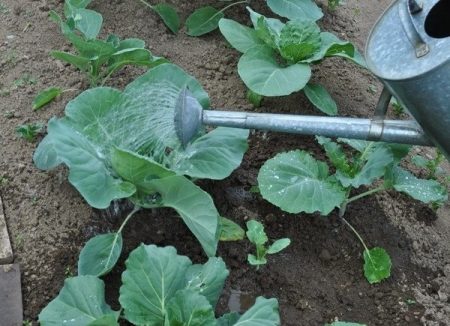
The intensity of watering depends on weather conditions - in dry sunny weather they are watered more often, since the top layer of the earth, where the roots are located, dries quickly in the heat, which harms the root system. The reference point is the state of the soil - if the lump rolled up from the ground breaks up, it means that the moisture is insufficient.
The soil on the ridge with cabbage should be constantly moist, but not flooded. Humidity must be maintained within 75%.
It is recommended to water with water heated during the day in a large tank. When using tap water, a temperature difference occurs between the heated soil and cold water, which negatively affects the roots. This must be taken into account at any stage of growth and for all varieties.
The best time for the procedure is morning or evening. In the daytime, in bright sunshine, a drop of water can (like a lens) focus the light and the sheet will get burned.
Watering methods:
- immature young plants are watered with a watering can, so as not to wash the soil from the roots;
- watering with a hose into the furrows dug between the rows;
- drip irrigation delivers water in metered portions, ensuring regular supply of the required amount of moisture;
- irrigation plants moisten the soil well, refresh plants, but control is required so as not to over-moisten the earth.
Properly organized watering helps the inner leaves to form normally, which leads to the formation of a dense large head of cabbage.
Top dressing
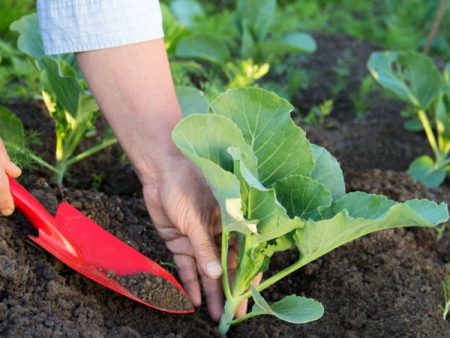
Regular top dressing is the key to obtaining a quality crop, since the presence of nutrients in the soil plays a large role in the formation of the head of cabbage.
Any type of fertilizer is applied to the moist soil under the root - liquid entering the leaves causes a burn. It is impossible to bring in fresh manure as a top dressing - the decomposition of organic matter in the soil takes place with increasing temperature, which is harmful to the root system of cabbage.
When to carry out:
- Top dressing No. 1 - 2 weeks after planting seedlings, mullein in solution (1: 5) or bird droppings (1:10) is used, spending 1.5 l on each plant.Instead of organics, you can use ammonium nitrate, having prepared the solution according to the instructions.
- Top dressing No. 2 - is carried out in the phase of intensive leaf growth 15-20 days after top dressing No. 1. A mixture of superphosphate, nitrate, potassium sulfate (2: 2: 1) is used as fertilizer. Norm - 50-60g per 1 m².
- Top dressing No. 3 - carried out 2 weeks after top dressing No. 2, if the plant develops poorly or becomes ill. To do this, mix potassium sulfate and superphosphate (1: 2), adding a little ash. The consumption rate is 25g per 1 bush.
Lighting and heat requirements
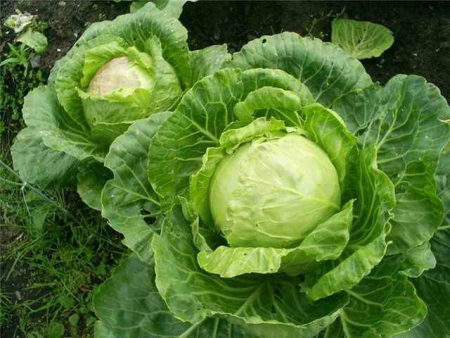
Cabbage belongs to cold-resistant plants and tolerates small frosts at -6 ° ... -7 ° C in adulthood, -2 ° ..- 3 ° C - as young seedlings after planting in the ground.
High temperatures (23 ° -29 ° C) are not a very favorable factor for it, since they contribute to the propagation of pests that cause great harm to the development and quality of the head, and significantly reduce the course of vital processes. At + 35 ° C and higher, development and growth cease.
The optimum temperature for cabbage is 15 ° -18 ° C.
One of the features of the culture is the requirement for illumination. Cabbage develops well with daylight hours of 15-17 hours. The lack of lighting affects the development of seedlings - it stretches, weakens, loses resistance to infections.
When transplanting seedlings into the soil, this important factor should be taken into account, and planting at a certain distance between the seedlings, so that in future, when growing, the plants do not interfere with each other and receive enough light. Otherwise, heads of cabbage will grow much smaller.
The distance between the seedlings of cabbage when planting:
- 0.3-0.4 m - early varieties, hybrids of white cabbage, kohlrabi;
- 0,5-0,6m - average ripening;
- 0.6-0.7m - late varieties;
- 0, 25-0.5m - color;
- 0.4-0.6m - Savoy;
- 0.3-0.5m - broccoli.
Hilling and cultivating
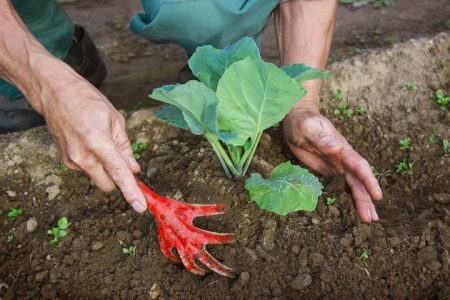
After rooting seedlings, all care activities begin, including removing weeds and loosening the soil.
They begin to loosen the earth after the seedling has gained strength and will take root, removing the formed crust on the soil. Then, if necessary, after 7-8 days.
The depth of loosening is initially small - 4-5cm, then loosened deeper - 6-8cm, 80-10cm.
Hilling is carried out to strengthen the stability of the stem and for additional supply of nutrients - new roots grow.
Seedlings of early ripening varieties spud after 2-3 weeks after planting, late ripening - 3-4 weeks. After 10-12 days, they spud again. Raking the ground later is more difficult - the leaves are already closing and they are easy to damage.
Leaf clipping
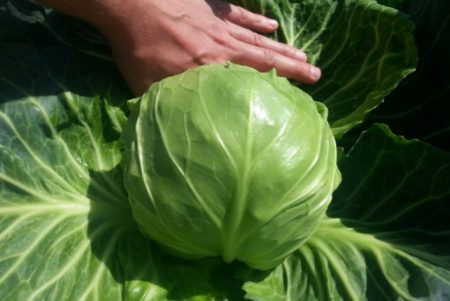
Leaves, as an organ, play a certain role in the life of cabbage - they participate in the formation of the elements necessary for the plant (photosynthesis), in the lower (covering) leaves there is an accumulation of nutrition needed to form the head.
Removal of seemingly extra leaves leads to a decrease in the intake of nutrients, creates the conditions for the penetration of infections and pests through the wound - juice attracts insects at the cliff site.
Each dangling leaf causes the death of a small portion of the root system and, as a result, to a decrease in food intake.
Professional opinion on leaf removal - only leaves damaged by a disease or pests need to be removed, and a healthy lower leaf prevents pests from entering the head, participates in the regulation of moisture and temperature.
Prevention of insect pests and diseases
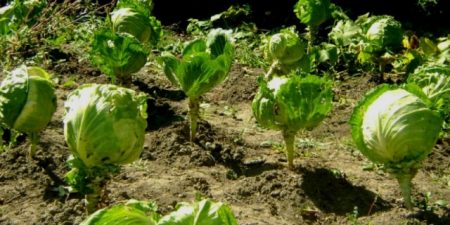
The most dangerous pest for cabbage is cabbage fly. Early ripe varieties are most susceptible to its effects - the active growth of the plant coincides with the period of reproduction of the insect.
The use (2-3 times) of technical chlorophos (80%) in solution or special insecticides with an interval of 6-8 days will prevent the occurrence of a pest. Scattering around the plant of the mixture will also help - ash and tobacco dust (100 g each), red pepper powder (1 tsp).
Until the forks are formed, a 0.2% solution of technical chlorophos (80%) or phosphamide is used, when the caterpillars of cabbage aphids, butterflies of a whitefly, scoops, cabbage moth appear.
During the period of laying the eggs by the butterfly, the solution of superphosphate and potassium chloride helps well - spraying is carried out.
Insecticides can be used to treat late varieties of cabbage - harmful substances become non-toxic before harvesting.
One of the common cabbage infections is keel. For its prevention, you need to disinfect the soil before planting seedlings, regularly conduct care (loosening, weeding). In case of infection, the diseased plant should be removed from the beds, the soil should be treated with formalin or Bordeaux liquid.
Tips for protecting all types of cabbage:
- penetration of the cabbage fly to the roots will stop the spanbond covering the soil;
- to protect against flying insects, the ridges with cabbage are covered with a spanbond;
- manual collection of tracks helps to significantly reduce their number;
- spraying leaves with a solution of vinegar (1 tbsp. l per 10 l) or ammonia (50 ml per 10 l) on a warm sunny day will scare off most pests;
- the specific smell of marigolds, mint, tansy, planted nearby, is not like insect pests;
- spraying decoctions of wormwood, dandelions, onion husks, garlic with the addition of (to improve adhesion) laundry soap helps with the appearance of aphids.
Proper care of planting cabbage will be the key to obtaining a quality crop, which will become a source of vitamins in autumn and winter.

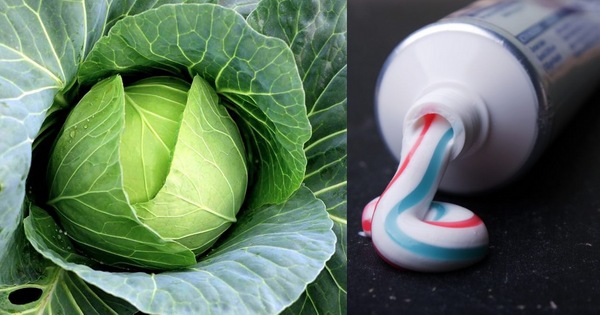
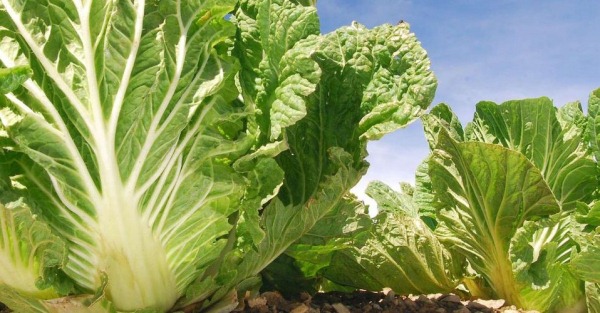
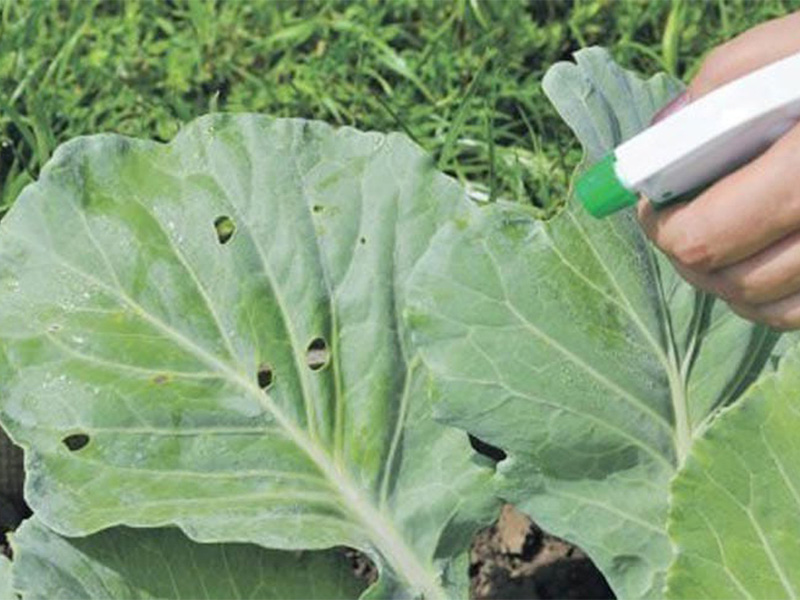
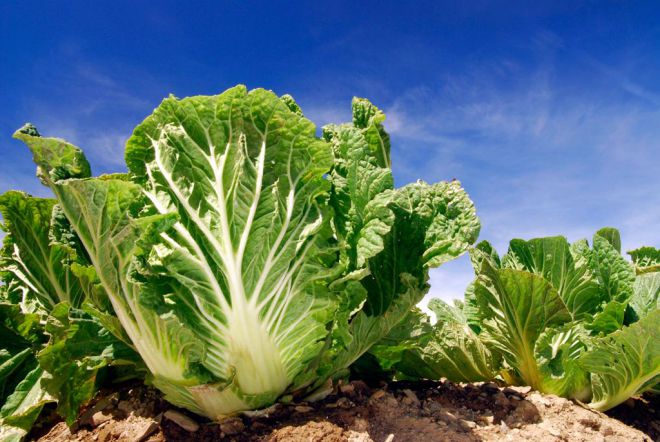 How to grow Chinese cabbage on your site?
How to grow Chinese cabbage on your site?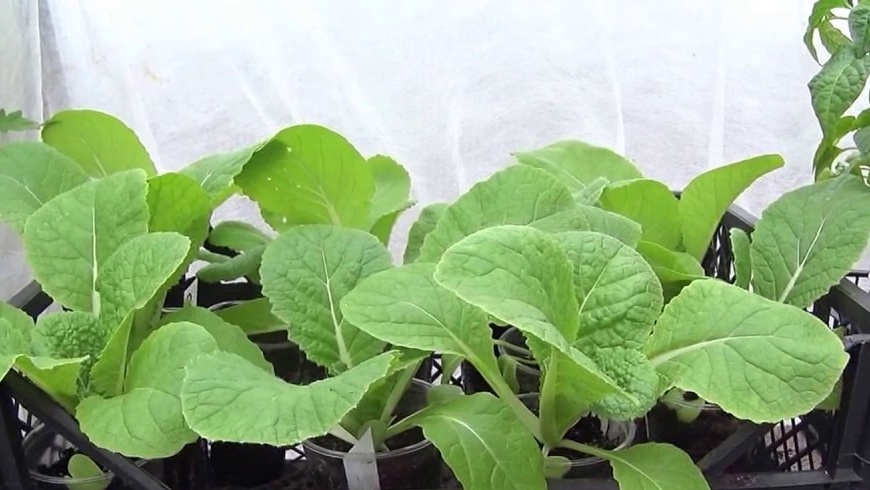 When to plant Chinese cabbage on seedlings in 2024
When to plant Chinese cabbage on seedlings in 2024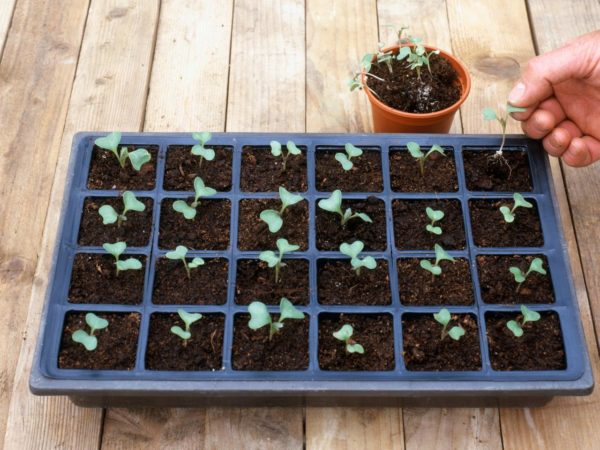 When to sow cabbage for seedlings in 2019 on the moon
When to sow cabbage for seedlings in 2019 on the moon Cauliflower: how to grow large snow-white inflorescences
Cauliflower: how to grow large snow-white inflorescences
Sinitsin Valery Mikhailovich
We want to offer a method of protecting cabbage from butterflies and other flying insects. Tested on their beds.